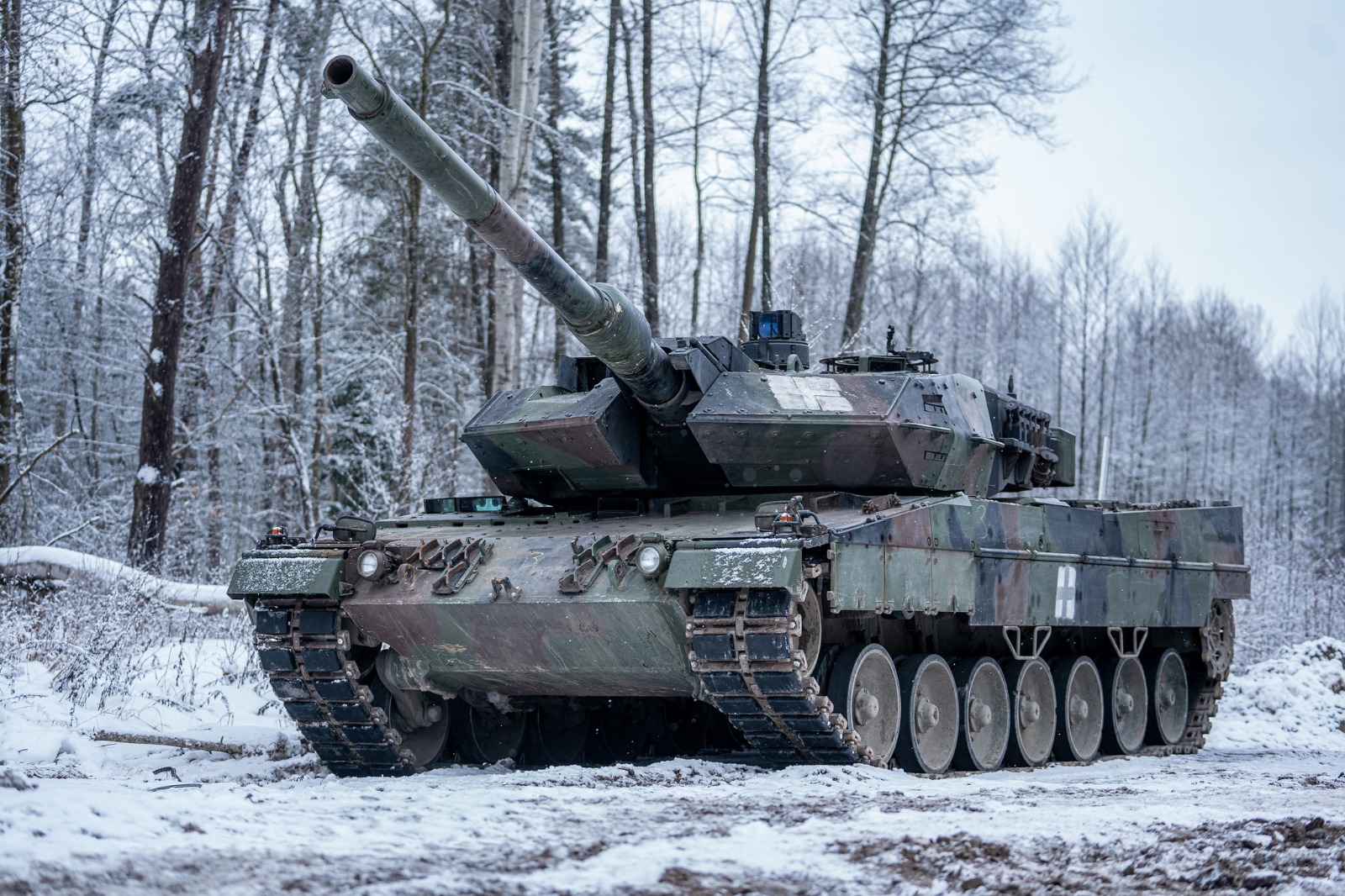A prominent German lawmaker and key decision-maker in defense budget allocations, Sebastian Schäfer, has revealed that only a limited number of the modern Leopard 2 tanks supplied by Germany to Ukraine are currently operational.
According to Schäfer, who holds influential roles in the Bundestag’s defense and finance committees, the primary cause behind this operational shortfall is the scarcity of essential spare parts needed for repairs.
Schäfer, an economist and member of Germany’s Green Party, recently communicated his concerns in a letter, urging weapons manufacturers to address the challenges in the repair process and expedite the supply of spare parts for the damaged Leopard tanks, reported Der Spiegel, a prominent German media outlet.
The lawmaker and German Defense Minister Boris Pistorius visited a repair workshop in Lithuania in late December, discovering that repairs were being significantly delayed.
The shortage of spare parts has led to only a “very small number” of the originally delivered Leopard tanks remaining operational in Ukraine, as highlighted by Schäfer.
“Unfortunately, it has to be noted that only a very small number of the main battle tanks delivered can still be used by Ukraine,” the politician said.
The urgency of the matter was underscored by the lawmaker, who emphasized the need for swift action to reinforce the supply of spare parts. Additionally, he pointed out that attempts by Ukrainian forces to conduct repairs have, in some instances, further exacerbated the damage to the Leopard tanks.
In proposing a solution, Schäfer suggested that Germany engage in discussions to provide additional training or instructions for Ukrainian mechanics.
Adding another layer to this predicament, representatives from the industrial repair shop in Lithuania disclosed to German media that the repair processes are protracted due to a pronounced scarcity of essential spare parts.
This revelation underscores a critical challenge in maintaining the operational readiness of military assets, necessitating urgent attention from relevant stakeholders.
Nonetheless, Berlin remains committed to providing ongoing support to Ukraine. In November, Germany’s defense ministry announced a substantial support package for Ukraine, totaling around $1.1 billion and encompassing a diverse array of new weapons.
Leopard Tanks In Ukraine
Following Russian President Vladimir Putin’s invasion of Ukraine on February 24, 2022, the international community, led by the United States and Germany, among other NATO countries, swiftly rallied to reinforce the Eastern European nation’s defenses.
While the US has assumed the role of Ukraine’s primary supporter since the conflict’s inception, Germany has emerged as the second-largest contributor.
Responding to Ukrainian President Volodymyr Zelensky’s persistent appeals to replace aging Soviet-era weaponry, Western allies, notably Germany, heeded the call for advanced battle tanks, with the German-made Leopards topping the list.
The green light for deliveries was granted in January 2023 following prolonged deliberations. US President Joe Biden pledged to send 31 Abrams tanks to Ukraine, prompting Germany to dispatch 18 Leopard 2 MBTs.
Joining Germany in support, countries like Canada, Poland, and Portugal also contributed Leopard tanks to Ukraine’s defense efforts.
Germany authorized a European coalition to dispatch a large fleet, including 88 Leopard 1 tanks and approximately 80 Leopard 2 tanks, addressing Ukrainian President Zelensky’s plea for modernized military equipment.
While Leopard 1 tanks are relics from the Cold War era, discontinued by Germany in 2000, Leopard 2s are acknowledged as some of the most advanced tanks deployed by Ukraine in the ongoing conflict.

However, the ambitious arsenal promised by the international supporters faced setbacks, primarily attributed to supply chain challenges and the need to refurbish the aging Leopard 1 tanks.
Complicating matters, Ukraine previously rejected 10 Leopard 1 tanks due to poor condition upon arrival, coupled with the technical challenge of repairing them.
Moreover, before Germany committed to dispatching Leopard tanks to Ukraine, the head of German military manufacturer Rheinmetall highlighted the necessity of dismantling and rebuilding stocks of Leopard 1 and Leopard 2 tanks.
Besides that, reports suggested that many of the 18 Leopard 2 tanks provided by Germany suffered significant damage during the battle, reflecting the intensity and extended duration of combat.
Meanwhile, as Ukraine confronts its second winter of the conflict, there has been a notable shift in the utilization of Leopard 2 tanks. Instead of offensive maneuvers, these tanks are now employed defensively as long-range artillery.
This adjustment aligns with Ukraine’s recent shift towards a more defensive stance, attempting to hold positions against escalating attacks as part of its ongoing efforts to counter Russian aggression.
- Contact the author at ashishmichel(at)gmail.com
- Follow EurAsian Times on Google News




